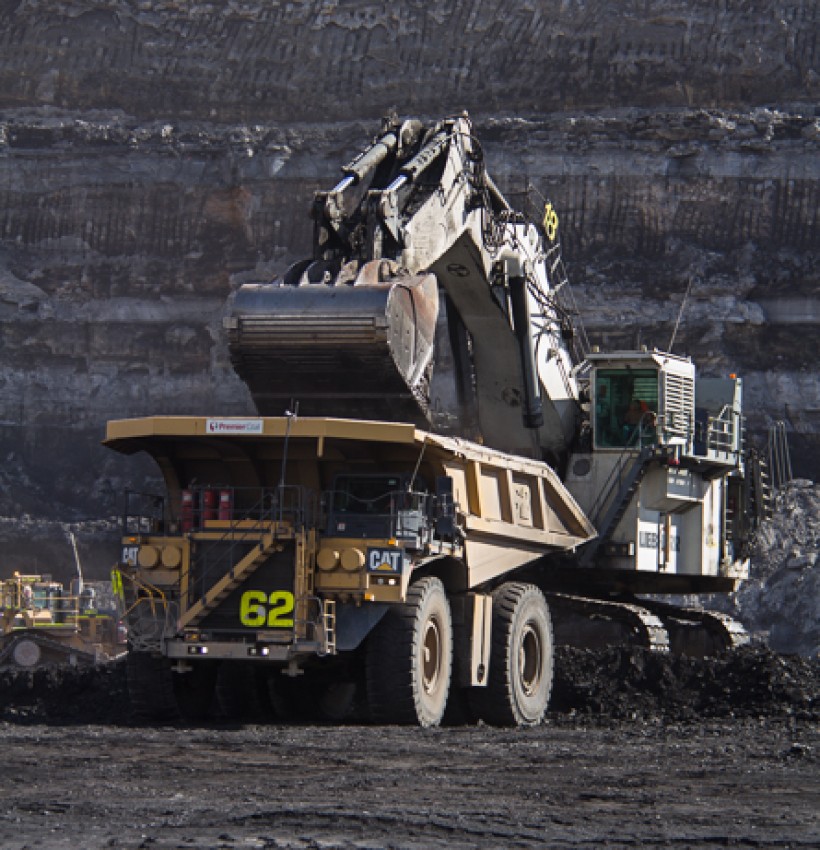Exploration
Coal reserves are defined for mining by conducting drilling programs for coal quality sampling and geotechnical assessment. All holes are geophysically logged to assist in stratigraphic correlation and geotechnical evaluation. Coal cores are analysed for a wide range of characteristics including chemical composition and expected physical behaviour in utilisation processes.
The main chemical tests are for specific energy, ash, moisture, volatiles, sulphur and carbon content. Ash fusion and grindability are important tests for power station applications. Geologists maintain databases of this information so that modelling of these parameters can be undertaken.
Mine Planning
Mine planning is an essential part of successfully designing and operating a mine. A considerable amount of expenditure and information is required to define a coal deposit, design the mine, then extract and prepare the coal for the customer.
The basic data comes from the geological model of the mine. To build a geological model, the geologist collates, analyses and interprets all the exploration drilling information. Once mining has commenced, in-pit mapping and coal quality monitoring is used to regularly refine these models.
Geologists use the Deswick modelling system and the result is a set of three-dimensional (3D) computer models and plans of coal seam structure (position in the ground), coal quality, roof and floor materials, interburden lithological types and chemistry, coal and interburden thickness (isopachs) and structural features such as faults and folds.
Each seam has a different set of distinguishing features. These include thickness, quality, partings or plies, roof and floor characteristics and its relationships to the surrounding seams. Coal Quality Geologist use these attributes when assessing the suitability and sequencing of mining a seam. The main quality parameters used daily are moisture, ash, Hardgrove Grindability Index, sulphur and specific energy.
Mining Engineers use the quality data and structural models to design the mine and schedule production. The pits are divided into “blocks” to aid design and reporting. The coal quality information is averaged over a block, initially on an in-situ basis.
This block-by-block data is fed into computer spreadsheets where run-of-mine (ROM) ash and specific energy are calculated using different roof and floor dilutions depending on the material type. The ROM quality is updated weekly as the seams are mined to reflect the actual ROM seam quality.
Mine planning is undertaken by Mining Engineers using Deswick mine-planning software and XPAC scheduling software. Planning is a continuous process as new information comes to light in the mining process. Premier Coal produces “long-term” (1 to 5 years) and “medium-term” (1 to 12 months) plans to ensure that adequate coal seams are exposed and extracted in a timely manner to meet customer contract specifications.
Production Phase
The mining process begins with clearing of vegetation, topsoil removal and stockpiling, followed by laterite removal and stockpiling. Topsoil removal is a critical process as this material is used in rehabilitation of the mine back to local native vegetation. Once the area is cleared, overburden removal can then commence.
The exposed coal seams are cleaned with dozers and graders before being mined using hydraulic excavators (in backhoe configuration). Thicker coal seams commonly require blasting prior to mining to maintain productivity rates, but thinner coal can be ripped with dozers to avoid blasting. In some cases, coal is “free dug” by the excavators.
The coal is hauled to the Coal Handling Plant using the same truck fleet as used for overburden removal. Processing involves crushing and sizing prior to blending on stockpiles. The Coal Handling Plant at Premier has a Malco Stacker Reclaimer system which produces an extremely consistent product by virtue of stacking in one direction and reclaiming at right angles. The coal product is delivered to either of the nearby coal-fired power stations, via overland conveyor systems. Deliveries to other customers occur by rail or truck using the train load-out system.

